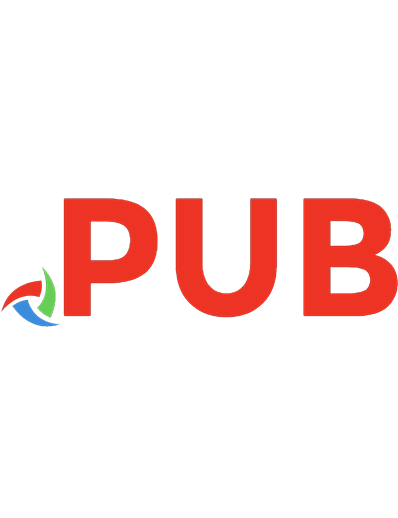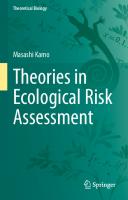Child and Adolescent Online Risk Exposure: An Ecological Perspective 0128174994, 9780128174999
Child and Adolescent Online Risk Exposure: An Ecological Perspective focuses on online risks and outcomes for children a
455 62 3MB
English Pages 472 [445] Year 2020
Table of contents :
Title-page_2021_Child-and-Adolescent-Online-Risk-Exposure
Child and Adolescent Online Risk Exposure
Copyright_2021_Child-and-Adolescent-Online-Risk-Exposure
Copyright
Contents_2021_Child-and-Adolescent-Online-Risk-Exposure
Contents
List-of-Contributors_2021_Child-and-Adolescent-Online-Risk-Exposure
List of Contributors
Preface_2021_Child-and-Adolescent-Online-Risk-Exposure
Preface
Chapter-1---Introduction_2021_Child-and-Adolescent-Online-Risk-Exposure
1 Introduction
An ecological model of child/adolescent risk exposure
References
Chapter-2---Problematic-internet-use--causes--c_2021_Child-and-Adolescent-On
2 Problematic internet use: causes, consequences, and future directions
Trends in digital technology use: benefits and risks
Description of behavioral addictions
Problematic internet use
Measurement of problematic internet use
Correlates of problematic internet use
Demographic correlates
Biological and genetic correlates
Behavioral correlates
Psychological correlates
Social correlates
Consequences of problematic internet use
Physical and behavioral outcomes
Psychological and social outcomes
Academic outcomes
Etiological models of problematic internet use
Impulse control disorder model
Cognitive-behavioral model
Recommendations for research and practice
Conclusion
References
Chapter-3---The-process-of-exploitation-and-victimizatio_2021_Child-and-Adol
3 The process of exploitation and victimization of adolescents in digital environments: the contribution of authenticity an...
Self-presentation and identity development
Exploitation of adolescents through digital technology
Definitions and effects of cyberexploitation
The process of cyberexploitation
Gender differences in cyberexploitation
The contributions of self-exploration and authentic self-expression to cyberexploitation
The risks of cybervictimization
Definition and effects of cybervictimization
The process of cybervictimization
Gender differences in cybervictimization
The contribution of self-exploration and authentic self-expression to cybervictimization
Limiting risks in digital environments
Conclusion
References
Chapter-4---Online-contact-risk-behaviors-and-ris_2021_Child-and-Adolescent-
4 Online contact risk behaviors and risk factors among Japanese high school students
Introduction
Method
Participants and procedures
Measures
Statistical analysis
Results
Descriptive statistics
Chi-square analysis
Correlations
Regression analysis
Discussion
References
Chapter-5---Understanding-child-and-adoles_2021_Child-and-Adolescent-Online-
5 Understanding child and adolescent cyberbullying
Introduction
Emergence of cyberbullying
Unique features associated with cyberbullying
Prevalence of cyberbullying
Cyberbullying behaviors
Cyber-perpetrators
Cybervictims
Cyberbully/victims
Bystanders
Consequences of cyberbullying
Relative risk perception of cyberbullying
Intervention
Conclusion
References
Chapter-6---Online-aggression-and-romantic-re_2021_Child-and-Adolescent-Onli
6 Online aggression and romantic relationships in adolescence
Introduction
Significance of romantic relationships in adolescence
Social media definitions and use in adolescence
Conceptual model
Cyberstalking
Definitions and qualities
The importance of romantic relationships
The importance of social media affordances
Areas for future research
Revenge porn
Definitions and qualities
The importance of romantic relationships
The affordances of social media
Areas for future research
Cyberbullying
Definitions and qualities
The importance of romantic relationships
The affordances of social media
Prevention and intervention efforts to mitigate the risks and consequences
References
Chapter-7---The-longitudinal-associations-of-cyberbul_2021_Child-and-Adolesc
7 The longitudinal associations of cyberbullying and cybervictimization: preliminary findings from a two-wave study
Introduction
Face-to-face and cyberbullying perpetration and victimization
Narcissism and cyberbullying/victimization
Callous–unemotional traits and cyberbullying perpetration and victimization
Popularity, social preference, social status insecurity, and cyberbullying/victimization
Prosocial behaviors and cyberbullying perpetration and victimization
Media use and cyberbullying perpetration and victimization
Present study
Methods
Participants
Measurement tools
Childhood Narcissism Scale
Face-to-face bullying involvement and Prosocial Behavior Scale
Cyberbullying involvement and Cyber-Prosocial Behavior (as giver) Scale
Cybervictimization and Cyber-Prosocial Behavior (as recipient) Scale
Face-to-face victimization and Prosocial Behavior (as recipient) Scale
Inventory of Callous–Unemotional Traits
Social Status Goals Questionnaire
Self-perceptions of status
New media use
Procedure
Results
Prevalence rates of cyberbullying perpetration and cybervictimization at Time 1 and Time 2
Stability of face-to-face cyberbullying/victimization between Time 1 and Time 2
Longitudinal associations of cyberbullying at Time 2
Longitudinal associations of cybervictimization at Time 2
Discussion
Implications
Conclusion
References
Chapter-8---The-rising-threat-of-cyberhate-for_2021_Child-and-Adolescent-Onl
8 The rising threat of cyberhate for young people around the globe
Body
Cyberhate defined
Why hate groups use online platforms
Cyberhate risk for children and adolescents
Frequency of cyberhate among adolescents
Theories
Correlates of involvement in cyberhate
Intrapersonal level
Sex
Age
Minority status
Socioeconomic status
Information and communication technology use
Being a perpetrator, victim, or bystander
Psychological correlates
Coping strategies
Attitudes
Interpersonal level
Peer-to-peer relationships
Parent–child relationships
Student–teacher relationships
Contextual level
Online setting
School setting
Freedom of speech
Implications for practice
Conclusion
References
Chapter-9---Same-incident--different-story--Investigat_2021_Child-and-Adoles
9 Same incident, different story? Investigating early adolescents’ negative online peer interactions from different perspec...
Method
Participants
Procedure
Data analysis
Results
Overview of incidents
Different perspectives on three cases
Instrument for researchers and practitioners
Discussion
References
Chapter-10---Parental-vigilance--low-self-control-_2021_Child-and-Adolescent
10 Parental vigilance, low self-control, and Internet dependency among rural adolescents
Literature review
Internet dependency
Parental vigilance and Internet dependency
Low self-control and Internet dependency
Low self-control theory
Evidence about the associations between parental vigilance, low self-control, and Internet dependency
The present study
Method
Sample
Measures
Background variables
Sex
Age
SES
Plan of analysis
Results
Discussion
Conclusion
References
Chapter-11---Cyberbullying-perpetration-and-victimizati_2021_Child-and-Adole
11 Cyberbullying perpetration and victimization among ethnic minority youth in the United States: similarities or differenc...
Cyberbullying experiences in childhood and adolescence
Why focus on cyberbullying among ethnic minority youth?
Heightened or reduced risk of cyberbullying involvement?
A focus on African American youth
Ethnicity as a moderator?
Studying within-group factors with ethnic minority youth
Moving the field forward: culturally relevant factors to consider
Overlap between cyberbullying and online discrimination?
Studying the familial context
Conclusion
References
Chapter-12---Racial-and-ethnic-diversity-in-the-social_2021_Child-and-Adoles
12 Racial and ethnic diversity in the social ecology of online harassment and cybervictimization: the adolescent–school context
Introduction
A social framework for the adolescent–school context
Cyberaggression, cyberbullying, and online hate
Prevalence of cyberbullying among youth of color
An ecological model of cyberbullying among the youth of color
Individual
Family context
Adolescent–school microsystem
School climate
Social support at school
Bullying, cyberbullying, and internalizing behavior at school
Bullying, cyberbullying, and externalizing behavior at school
Anticyberbullying and cyberharassment: programs, policies, and implications
Programs focusing on the adolescent–school microsystem
Beyond the focal adolescent–school microsystem: implications for policy, intervention, and theory
Framing a strength-based perspective to cyberbullying
Out-of-school cyberbullying interventions
References
Chapter-13---Cyberbullying-and-cybervictimizati_2021_Child-and-Adolescent-On
13 Cyberbullying and cybervictimization among youth with disabilities
Definitions of key terms
Types of bullying
Traditional bullying
Cyberbullying
Prevalence and gender considerations
Risk factors for victims and perpetrators of cyberbullying
Individual risk factors
Age
Gender
Sexual orientation
Disability status
Social emotional factors
Environmental risk factors
Time spent online
Supervision/monitoring
Social support
School variables
Outcomes associated with involvement in cyberbullying
Mental health outcomes
Depression
Anxiety
Self-esteem
Physical health and risky behaviors
Academic outcomes
Setting
School-based prevention/intervention of cyberbullying
Research on interventions for youth with disabilities for traditional bullying
Stigma-based bullying
Conclusion
References
Chapter-14---The-negative-online-experiences-of_2021_Child-and-Adolescent-On
14 The negative online experiences of maltreated children and adolescents
Definition of child and adolescent maltreatment
History of child and adolescent maltreatment
Prevalence rates of child and adolescent maltreatment
Outcomes associated with child and adolescent maltreatment
Exposure to negative online experiences among maltreated children and adolescents
Online addiction
Online behaviors
Online sexualization
Recommendations for future directions
Conclusion
References
Chapter-15---LGBTQ-youth-and-digital-medi_2021_Child-and-Adolescent-Online-R
15 LGBTQ youth and digital media: online risks
Theoretical frameworks
Cyberbullying and LGBTQ youth
Excessive digital media use among LGBTQ youth
Misinformation and LGBTQ youth
Suicide contagion and corumination among LGBTQ youth
Sexual health and LGBTQ youth
Sexual exploitation and LGBTQ youth
Discussion
References
Chapter-16---Gendered-nature-of-digital-abuse-in_2021_Child-and-Adolescent-O
16 Gendered nature of digital abuse in romantic relationships in adolescence
Introduction
Digital technologies and dating violence
Background: the role of gender in teen dating violence
Gender differences in cyber dating abuse
Gender role norms and cyber dating abuse
Cyber dating abuse and sexual orientation
School-based programs to prevent or reduce violence in teen dating relationships
Conclusion
References
Chapter-17---Advances-in-the-cyberbullying-lite_2021_Child-and-Adolescent-On
17 Advances in the cyberbullying literature: theory-based interventions
Shifting from atheoretical to theoretical
Defining and measuring cyberbullying
Scope of cyberbullying
Correlates of cyberbullying
Cyberbullying interventions and theory
Theories of Reasoned Action and Planned Behavior
Media Heroes
iZ Hero
Video intervention
Social Ecological Theory/Ecological Systems Theory
Cyber-friendly schools
ViSC
Tabby
KiVa
Theory of Normative Social Behavior
ConRed
The Barlett Gentile Cyberbullying Model
Conclusion
References
Chapter-18---Online-risk-interventions--implicati_2021_Child-and-Adolescent-
18 Online risk interventions: implications of theory of mind and other considerations
Theoretical framework of cyberbullying
Moral development and cyberbullying
Theory of mind and cyberbullying
Emotion regulation and cyberbullying
Inhibition of learned behaviors and cyberbullying prevention
Risk and protective factors of cyberbullying
Individual level
Family level
School and community level
Implications for cyberbullying intervention programs and prevention efforts
Future program development considerations: Selection and implementation practices
Guidelines and considerations for specific cyberbullying interventions
References
Chapter-19---Using-focus-groups-and-quality-circles-to-_2021_Child-and-Adole
19 Using focus groups and quality circles to enable pupil voice in European teenagers from socioeconomically disadvantaged ...
Introduction: the Blurred Lives Project
Quality circles and sequential focus groups
Experiences of quality circles and sequential focus groups in the Blurred Lives Project
London, England
Berlin, Germany
Eindhoven, the Netherlands
Bologna, Italy
Belfast, Northern Ireland
Discussion
Conclusion
References
Chapter-20---Conclusion_2021_Child-and-Adolescent-Online-Risk-Exposure
20 Conclusion
Summary of chapters
Section I
Section II
Section III
Section IV
Trends in the literature
Recommendations and new research directions
Recommendations for educators
Recommendations for parents
Recommendations for policies
New research directions
Concluding statement
Index_2021_Child-and-Adolescent-Online-Risk-Exposure
bm_B978-0-12-817499-9.00025-9_tit0010


![Child, Adolescent and Family Refugee Mental Health: A Global Perspective [1st ed.]
9783030452773, 9783030452780](https://dokumen.pub/img/200x200/child-adolescent-and-family-refugee-mental-health-a-global-perspective-1st-ed-9783030452773-9783030452780.jpg)

![Abnormal Child and Adolescent Psychology [9 ed.]](https://dokumen.pub/img/200x200/abnormal-child-and-adolescent-psychology-9nbsped.jpg)

![CDEV2 - Child and Adolescent Development [2nd ed.]
9781337116923](https://dokumen.pub/img/200x200/cdev2-child-and-adolescent-development-2ndnbsped-9781337116923.jpg)



![The Global Context for New Directions for Child and Adolescent Development : New Directions for Child and Adolescent Development, Number 147 [1 ed.]
9781119058441, 9781119058311](https://dokumen.pub/img/200x200/the-global-context-for-new-directions-for-child-and-adolescent-development-new-directions-for-child-and-adolescent-development-number-147-1nbsped-9781119058441-9781119058311.jpg)